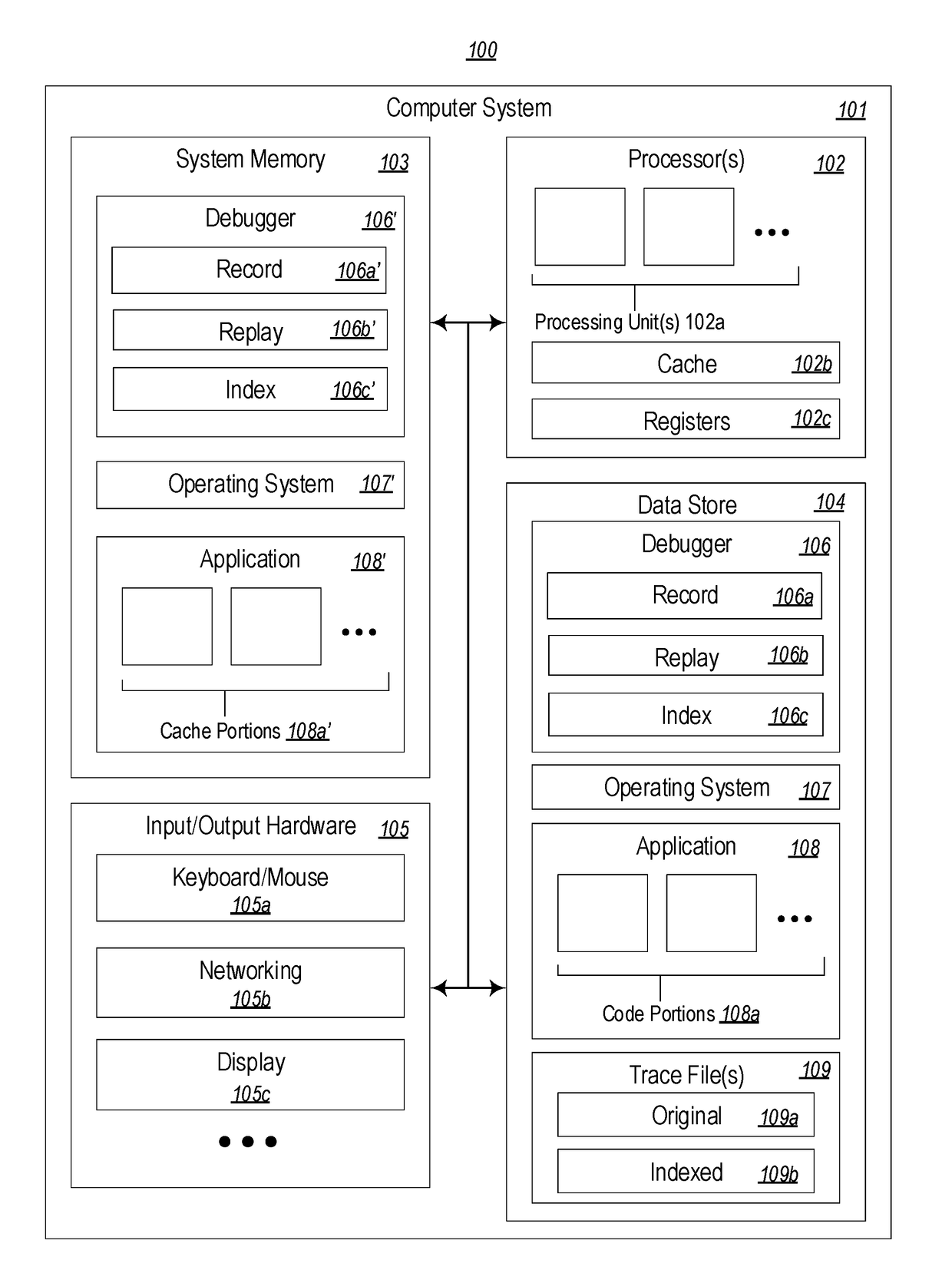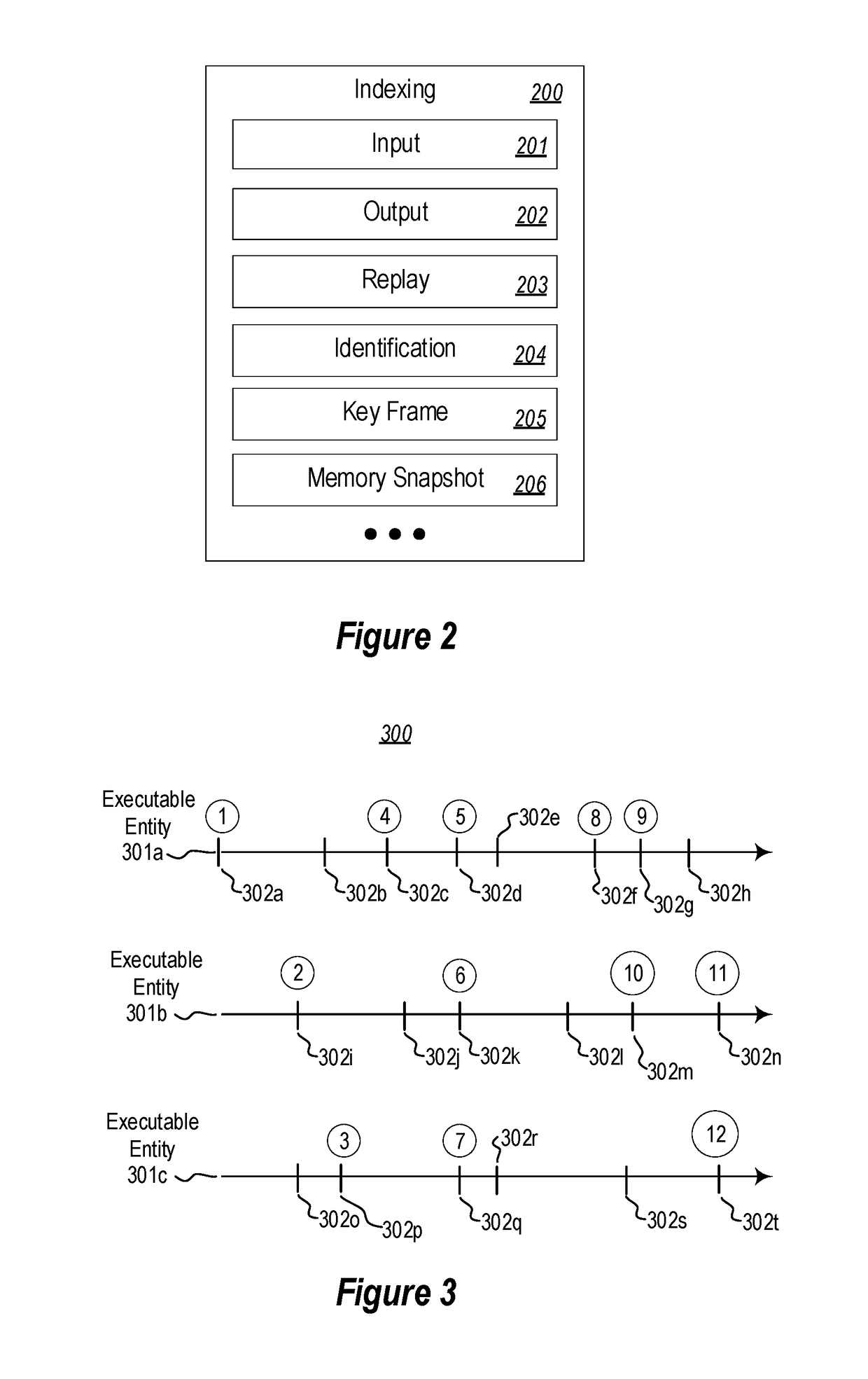Indexing a trace by insertion of key frames for replay responsiveness
a trace and responsiveness technology, applied in the field of indexing a trace by insertion of key frames for replay responsiveness, can solve the problems of not being optimally suited to responsive debugging experience, occupying a significant portion of application development time for tracking down runtime errors to pinpoint code bugs, and developers often spend a significant amount of time “debugging” the cod
- Summary
- Abstract
- Description
- Claims
- Application Information
AI Technical Summary
Benefits of technology
Problems solved by technology
Method used
Image
Examples
Embodiment Construction
[0022]At least some embodiments described address the recognition by the inventors that the performance and resource utilization goals (and, often, the trace computing environment used) during trace recording are different than the performance and resource utilization goals (and, often, the replay computing environment used) during trace replay. In general, these embodiments address these differences by indexing trace files for responsive replay—including replaying data stream(s) from a trace file that was generated at trace time, while recording an indexed trace file with characteristics that account for the performance and resource utilization goals of replay (and, potentially, the replay computing environment to be used) to provide a responsive debugging experience.
[0023]In some embodiments, recording this indexed trace file includes breaking trace data stream(s) into a plurality of sections through the insertion of key frames at identified points of interest—in which each sectio...
PUM
 Login to View More
Login to View More Abstract
Description
Claims
Application Information
 Login to View More
Login to View More - R&D
- Intellectual Property
- Life Sciences
- Materials
- Tech Scout
- Unparalleled Data Quality
- Higher Quality Content
- 60% Fewer Hallucinations
Browse by: Latest US Patents, China's latest patents, Technical Efficacy Thesaurus, Application Domain, Technology Topic, Popular Technical Reports.
© 2025 PatSnap. All rights reserved.Legal|Privacy policy|Modern Slavery Act Transparency Statement|Sitemap|About US| Contact US: help@patsnap.com



